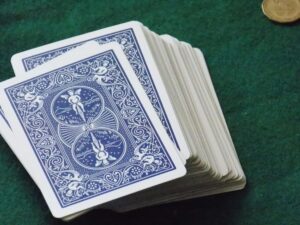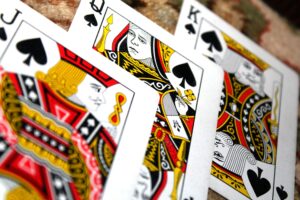Navigating the world of Blackjack can initially seem daunting, but understanding the core aspect of blackjack card values can significantly enhance your gameplay and strategy. This guide aims to demystify the card values in Blackjack, ensuring you’re well-prepared for your next game. Whether you’re a seasoned player or taking your first step into the fascinating world of casino games, mastering card values is essential.
Understanding Blackjack Card Values
At its heart, Blackjack is a game of numerical strategy where each card has a specific value that impacts your total hand score. The objective is to beat the dealer’s hand without exceeding a total of 21. Here’s how each card stacks up:
| Card Type | Value |
|---|---|
| Aces | 1 or 11 |
| Kings, Queens, Jacks | 10 |
| Number Cards (2-10) | Face Value |
The Role of Aces
Aces are the game changers in Blackjack. Their ability to count as either 1 or 11 provides flexibility, allowing players to adjust their hand’s total value dynamically. This dual value makes the Ace a powerful card, capable of turning the tide in your favor.
How to Count Cards in Blackjack
Keeping track of card values isn’t just about knowing the numbers; it’s about understanding how those numbers can work in your favor. Here’s a simple, effective method to keep in mind:
- Low Cards (2-6): Generally beneficial for the dealer, increasing the chances of a dealer’s hand improving without busting.
- High Cards (10-Ace): Favorable to the player, increasing the likelihood of hitting 21 and making the dealer more likely to bust.
- Neutral Cards (7-9): These cards have a minimal impact on the hand’s outcome and are considered neutral in the game strategy.
Strategies Based on Card Values
Understanding the values and how they can impact your game is crucial. Here are strategies to consider:
- When to Hit: If your hand’s total is significantly lower than 21, and the risk of busting is low, take a hit.
- When to Stand: Depending on your hand and the dealer’s visible card, standing might be the safer option, especially with totals of 17 or higher.
- Splits and Doubles: High-value cards like Aces and 8s are often worth splitting, while doubling down could be advantageous when you have a total of 10 or 11.
Final Thoughts
Mastering the art of blackjack card values doesn’t happen overnight, but it’s an achievable goal that can significantly enhance your playing experience and outcomes. Remember, every game is an opportunity to apply what you’ve learned and refine your strategy. Happy playing!



